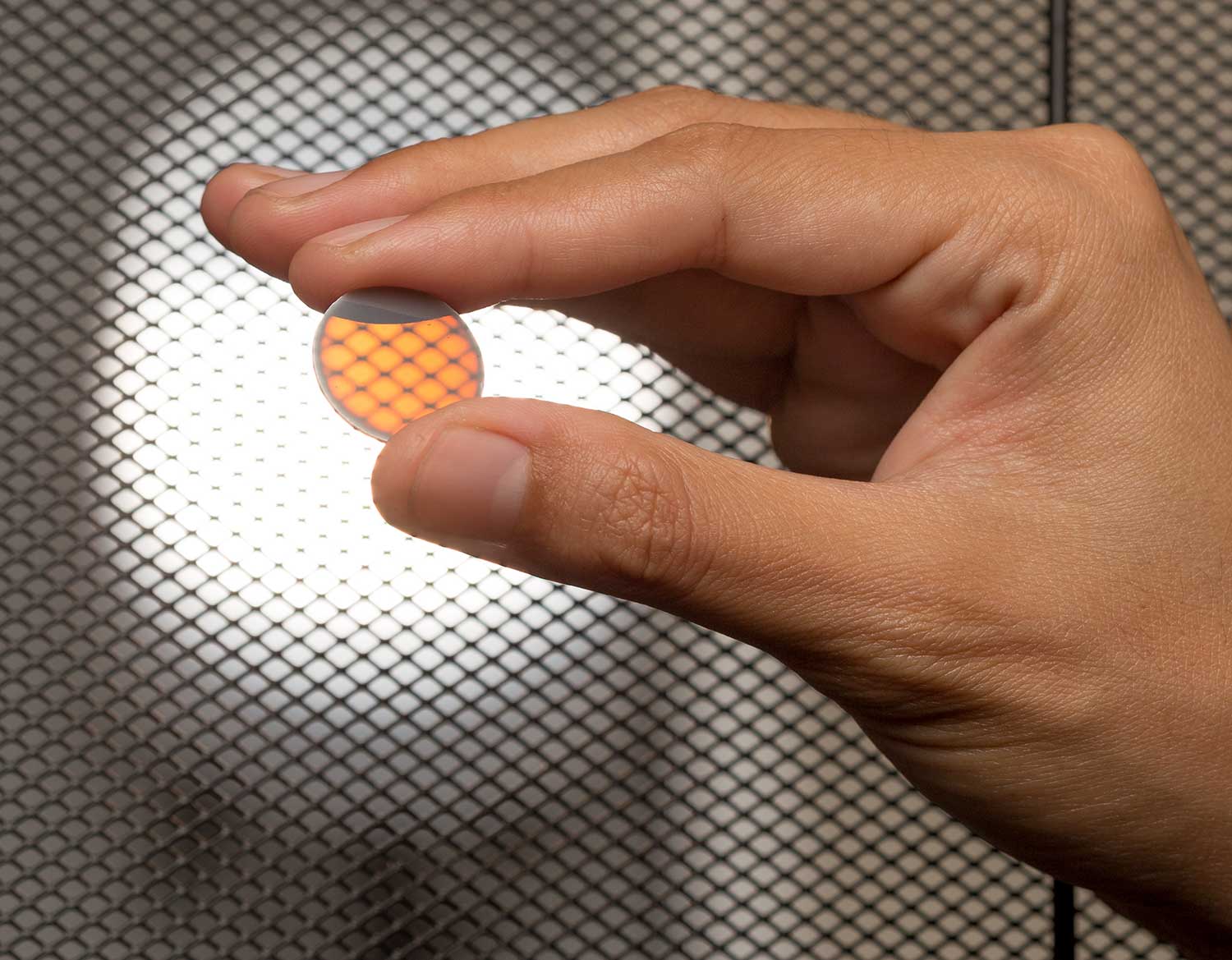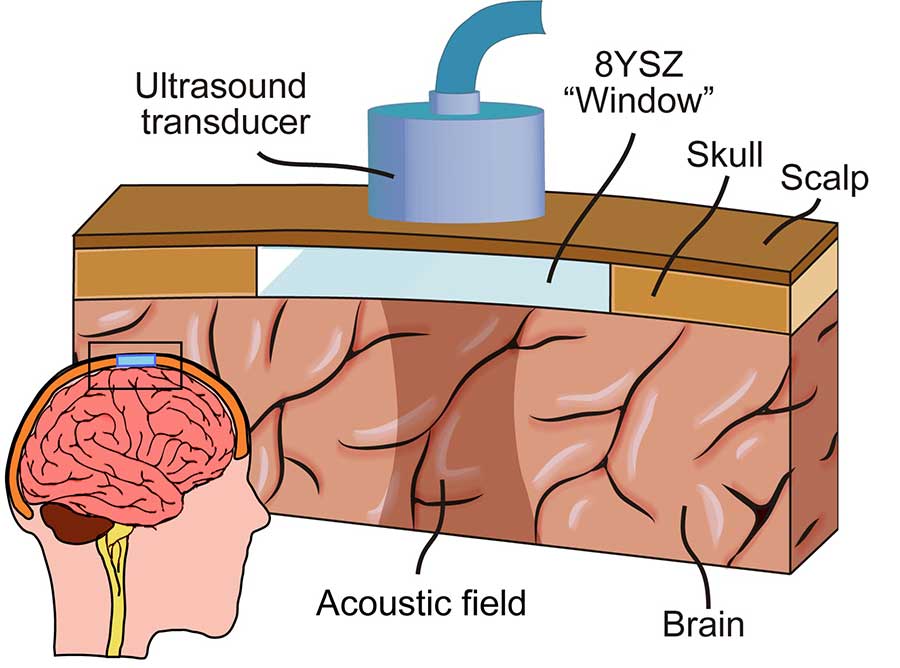
Getting Therapeutic Sound Waves Through Thick Skulls
Ceramic implant material will expand the use of ultrasound to treat brain disorders and cancers
Published Date
By:
- Liezel Labios
Share This:
Article Content

Ceramic cranial implant serves as a "Window to the Brain." Credit: David Baillot/UC San Diego Jacobs School of Engineering
Ultrasound brain surgery has enormous potential for the treatment of neurological diseases and cancers, but getting therapeutic sound waves through the skull and into the brain is no easy task. To address this problem, an international team of researchers has developed a window-like cranial implant through which doctors can deliver ultrasound treatments on demand and on a recurring basis — without having to perform repeated craniotomies, which are highly invasive procedures used to access the brain.
The new implant builds on work being done through the international, interdisciplinary ‘Window to the Brain’ project, an effort led by the University of California Riverside in partnership with the University of California San Diego and three research institutions in Mexico. The work was published on Aug. 2 in the journal Advanced Healthcare Materials.
Ultrasound — sound waves that are at a higher frequency than those audible to humans — can be used to treat a variety of brain disorders, including Alzheimer’s and Parkinson’s diseases. Ultrasound can also be used to kill cancer cells, dissolve blood clots during stroke, and open the blood-brain barrier to enhance drug delivery.
However, the human skull, called the cranium, is between 2 and 8 millimeters thick and relatively dense, meaning that most sound waves are reflected or absorbed before they make it into the brain.
To help doctors deliver therapeutic sound waves into the brain, researchers developed and tested a transparent, ceramic material that could be used to replace a portion of the cranium and that allows easy, targeted transmission of ultrasound waves into the brain. The material, which is a new variation of the ceramic material Yttria Stabilized Zirconia (YSZ), is non-porous, allowing non-focalized, low-intensity ultrasound waves to pass through.

Researchers have developed a ceramic cranial implant through which doctors can deliver ultrasound treatments for brain disorders and cancer.
The team previously developed a YSZ cranial implant to deliver laser-based therapies into the brain—this version is already in preclinical trials, and the current implant material could be used to deliver both ultrasound and laser-based treatments.
Ceramic materials show significant promise because they are biocompatible, extremely hard, and shatter resistant, making them ideal for implants.
“These materials are already being used in dental crowns and hip replacements, and our team is working to extend their application to the diagnosis and treatment of a wide variety of brain pathologies and neurological disorders,” said Guillermo Aguilar, professor and chair of mechanical engineering at the UC Riverside Bourns College of Engineering and co-senior author of the study.
“Developing an optically and radio-frequency transparent cranial implant was already an exciting accomplishment, and we continue to work to make this implant a reality. Now, proving that ultrasound could be transmitted through the implant could expand its therapeutic capabilities even further.”
“Our findings can possibly extend the application of zirconia, a material that is sometimes called the ‘steel of ceramics’ because of its versatility,” said Javier E. Garay, a mechanical engineering professor at the UC San Diego Jacobs School of Engineering who co-led the work with Aguilar.
“It is important to appreciate that the zirconia we developed works well for this application because we engineered it to have low porosity. Porosity, a common defect in ceramics produced by traditional methods, significantly deteriorates ultrasound transmission as we show in this paper.”
Paper title: “Novel Cranial Implants of Yttria Stabilized Zirconia as Acoustic Window for Ultrasonic Brain Therapy.” In addition to Aguilar and Garay, contributors are: Mario Gutierrez, a postdoctoral researcher in Aguilar’s group during this project, and now a CONACYT research fellow at Instituto Nacional de Rehabilitación, Subdirección de Investigación Tecnológica (DIIM) in México City, who is first author on the paper; professors Lorenzo Leija and Arturo Vera, researchers at Centro de Investigación y de Estudios Avanzados (CINVESTAV) del Instituto Politécnico Nacional (IPN) in México City; and Elias Penilla, a postdoctoral researcher at UC San Diego who completed the work as a graduate student at UC Riverside.
The UC Riverside Office of Technology Commercialization has filed a patent application for the inventions above.
Share This:
You May Also Like
Stay in the Know
Keep up with all the latest from UC San Diego. Subscribe to the newsletter today.


